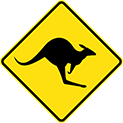Print Acumen Graphic Design – Services Australia Wide

Creating a corporate identity through graphic design involves developing visual elements that represent and communicate the essence, values, and personality of a business. Here are the key steps in designing a corporate identity:
- Logo Design: The logo is the cornerstone of corporate identity. It should be unique, visually appealing, and instantly recognizable. The logo design should reflect the company’s values, industry, and target audience. Consider typography, color scheme, and visual symbols or icons that encapsulate the brand’s identity.
- Color Palette: Select a color palette that aligns with the company’s brand and evokes the desired emotions and perceptions. Colors have psychological associations, so choose hues that resonate with the brand’s personality and values. Consider how the colors will be used across various applications, such as in the logo, website, marketing materials, and packaging.
- Typography: Choose appropriate fonts for the company’s brand identity. Typography should reflect the brand’s personality and be legible across different media. Select primary and secondary fonts that complement each other and establish consistency in all communications.
- Visual Elements: Establish a set of visual elements that support the brand identity. This includes patterns, icons, illustrations, and graphics that can be used consistently across various applications. These elements should reinforce the brand’s visual identity and create a cohesive and recognizable look.
- Stationery Design: Design business cards, letterheads, envelopes, and other stationery items that feature the company’s brand elements. These materials should be consistent in design, using the logo, colors, and typography to reinforce the brand identity and create a professional and cohesive impression.
- Website Design: Create a website that reflects the corporate identity and provides a user-friendly experience. Incorporate the logo, colors, and typography consistently throughout the site. Ensure that the design and layout convey the brand’s values, and that the website functions well across different devices.
- Marketing Collateral: Develop marketing collateral such as brochures, flyers, presentations, and advertisements that align with the corporate identity. Consistency in design elements, colors, fonts, and imagery will create a cohesive and professional brand image across all marketing materials.
- Packaging Design: If applicable, design packaging that reflects the brand’s identity and communicates the product’s value. Incorporate the logo, colors, and visual elements consistently on packaging to create a cohesive and recognizable brand presence.
- Brand Guidelines: Document all the design elements and guidelines in a brand style guide. This guide serves as a reference for internal and external stakeholders and ensures consistency in visual representation of the brand. Include specifications for logo usage, color codes, typography guidelines, and other design elements.
Remember, designing a corporate identity is an iterative process that requires input from stakeholders and careful consideration of the brand’s values, target audience, and industry. Working with professional graphic designers or branding agencies can help ensure a cohesive and impactful corporate identity design.
